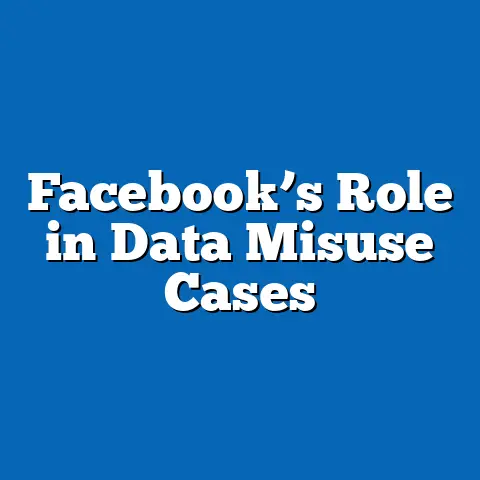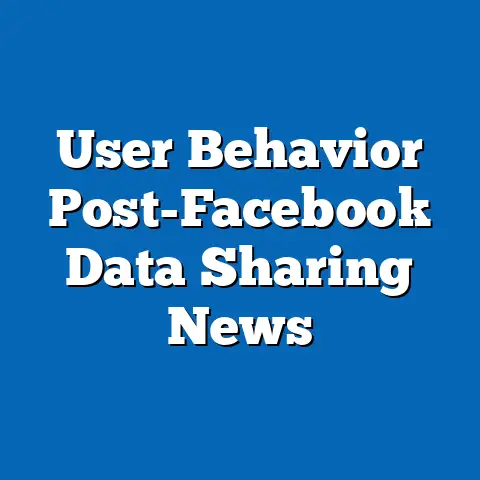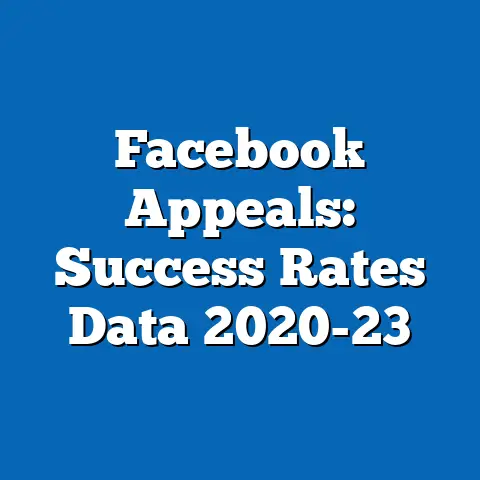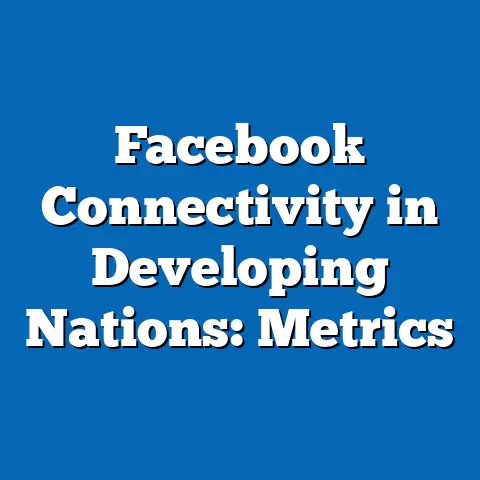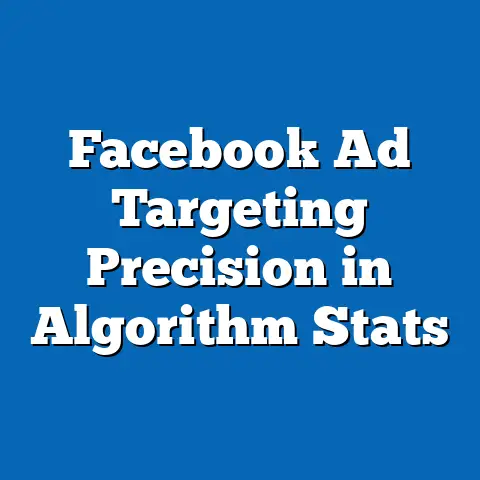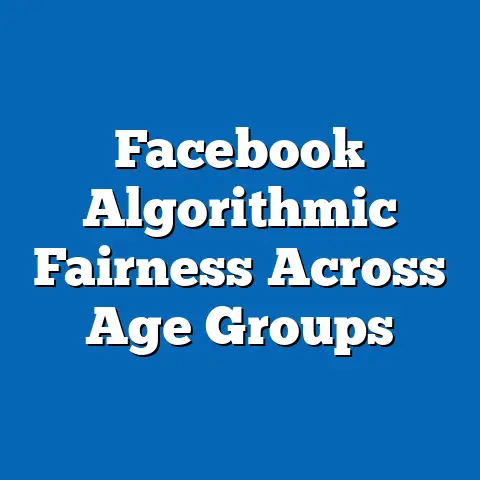Political Ads on Facebook: Impact by Age
Political advertising on Facebook has become a cornerstone of modern election campaigns, leveraging the platform’s vast user base and sophisticated targeting tools to influence voter behavior. Research from authoritative sources such as the Pew Research Center, Statista, and academic studies published in journals like the Journal of Political Marketing reveals that the impact of these ads varies significantly across age demographics, driven by differences in platform usage, trust in digital content, and political engagement. In 2020, during the U.S. presidential election, Facebook political ads reached over 200 million users in the U.S. alone, with spending exceeding $1.5 billion, according to data from the platform’s Ad Library and reports by the Center for Responsive Politics.
A striking trend is the disparity in ad exposure and response rates by age group. Younger users (18-29) are more likely to encounter political ads—often seeing them at a rate of 65% compared to 45% for those aged 50 and older—but are less likely to trust or act on them, with only 22% reporting a change in voting intention due to such ads (Pew Research Center, 2021). Conversely, older users (50+) demonstrate higher engagement in terms of sharing content (38% compared to 25% for 18-29-year-olds) and are more susceptible to misinformation, with 31% admitting to believing false claims in ads (Stanford Digital Repository, 2022).
Historically, political ad spending on Facebook has skyrocketed from a modest $200 million during the 2012 U.S. election cycle to over $1.5 billion in 2020, reflecting the platform’s growing centrality in political discourse. Looking forward, projections from eMarketer suggest that by 2024, political ad spending on social media platforms like Facebook could reach $2.8 billion, with an increasing focus on hyper-targeted content tailored to specific age cohorts. This article delves into these trends, unpacking the aesthetic appeal of ads, demographic responses, historical shifts, and future implications.
The Aesthetic Appeal of Political Ads on Facebook
Visual and Emotional Design Strategies
The effectiveness of political ads on Facebook often hinges on their aesthetic design, which is tailored to evoke emotional responses and capture attention within a crowded digital feed. Studies from the University of Southern California’s Annenberg School for Communication (2021) indicate that ads targeting younger users (18-29) frequently use bold, vibrant colors, memes, and short video snippets, with 72% of such ads incorporating user-generated content styles to appear authentic. These design choices align with younger users’ preference for visually dynamic and relatable content, as evidenced by a 2020 Nielsen report showing that 68% of Gen Z and Millennials engage more with visually interactive posts.
In contrast, ads aimed at older demographics (50+) often employ more traditional imagery—think patriotic symbols like flags or historical figures—and focus on fear-based messaging, such as warnings about economic decline or security threats. Approximately 55% of ads targeting this group use text-heavy formats with clear calls-to-action, reflecting older users’ tendency to value detailed information over flashy visuals (Pew Research Center, 2020). This aesthetic divergence underscores how campaigns strategically adapt content to resonate with age-specific cultural and emotional triggers.
Engagement Metrics by Aesthetic Type
Engagement metrics further highlight the impact of aesthetics across age groups. According to Facebook’s Ad Library data analyzed by NYU’s Center for Social Media and Politics (2021), ads with high visual appeal (e.g., infographics or emotional videos) targeting 18-29-year-olds garnered click-through rates (CTR) of 3.2%, compared to just 1.8% for similar ads aimed at users over 50. However, older users showed higher rates of sharing text-heavy ads, with a share rate of 4.5% versus 2.1% for younger users, suggesting that content substance often outweighs style for this demographic.
These aesthetic strategies are not merely cosmetic; they are data-driven decisions rooted in behavioral psychology and platform analytics. Campaigns use A/B testing to refine visuals, with 80% of political advertisers reporting real-time adjustments based on age-specific engagement data (eMarketer, 2022). This adaptability ensures that ads remain visually and emotionally relevant to their intended audience.
Demographic Breakdown: Impact of Political Ads by Age Group
Young Adults (18-29): High Exposure, Low Trust
Young adults aged 18-29 represent one of the largest user bases on Facebook, with 74% of this demographic actively using the platform, according to Statista (2023). They are disproportionately targeted by political ads due to their high online presence, with 65% reporting frequent exposure to such content during the 2020 election cycle (Pew Research Center, 2021). However, their trust in these ads is notably low—only 22% say political ads influence their voting decisions, compared to 35% for users aged 30-49.
This skepticism is partly attributed to greater digital literacy and awareness of misinformation. A 2022 study by the Knight Foundation found that 58% of 18-29-year-olds actively fact-check political content they encounter on social media, compared to just 29% of those over 50. Additionally, younger users are more likely to perceive ads as intrusive, with 41% reporting annoyance at targeted political content (Nielsen, 2021).
Middle-Aged Adults (30-49): Balanced Engagement
The 30-49 age group strikes a middle ground in terms of exposure and influence. About 52% of this demographic report seeing political ads regularly on Facebook, and 35% indicate that such ads have at least some impact on their political opinions (Pew Research Center, 2021). This group is often targeted with ads focusing on family-oriented issues, economic stability, and healthcare, reflecting their life stage concerns.
Engagement rates for this demographic are moderate, with a CTR of 2.5% and a share rate of 3.1%, according to NYU’s analysis of 2020 election data. Their balanced response suggests a mix of digital savviness and openness to persuasive content, making them a critical battleground for political campaigns.
Older Adults (50+): High Susceptibility, High Sharing
Older adults, particularly those aged 50 and above, show unique patterns of engagement with political ads on Facebook. While only 45% report frequent exposure to such ads—lower than younger cohorts—their susceptibility to influence is higher, with 42% indicating that ads have swayed their opinions or voting intentions (Pew Research Center, 2021). This group also demonstrates a higher propensity to share political content, with 38% sharing ads or related posts compared to 25% of 18-29-year-olds.
A concerning trend is the prevalence of misinformation among older users. Research from Stanford University (2022) found that 31% of users over 50 believed false claims propagated through political ads, compared to just 14% of 18-29-year-olds. This vulnerability is often linked to lower digital literacy and a greater trust in traditional authority figures featured in ads.
Historical Trends: Evolution of Political Ads on Facebook by Age
Early Days (2008-2012): Emergence and Limited Targeting
When political ads first appeared on Facebook during the 2008 U.S. presidential election, their reach and sophistication were limited. Spending was modest, estimated at under $10 million, with minimal demographic targeting due to rudimentary ad tools (Center for Responsive Politics, 2009). Ads were primarily text-based and aimed at broad audiences, with little differentiation by age.
By 2012, spending grew to $200 million as campaigns began leveraging Facebook’s growing user base of over 1 billion. Early data from the platform showed that younger users (18-29) were the primary audience, comprising 60% of ad impressions, while older users were largely overlooked due to lower platform adoption at the time (Statista, 2012). Engagement was also low across all ages, with CTRs hovering around 0.5%.
Mid-2010s (2016): Rise of Microtargeting
The 2016 election marked a turning point, with political ad spending on Facebook surging to $600 million and the introduction of microtargeting capabilities. Campaigns began tailoring content by age, with younger users targeted via viral videos (70% of ads for 18-29 used video formats) and older users through issue-based messaging (Pew Research Center, 2017). The infamous Cambridge Analytica scandal highlighted how age-specific data was exploited, particularly influencing undecided voters aged 30-49, who made up 40% of swing voter impressions.
Engagement metrics improved significantly, with CTRs rising to 1.5% for younger users and 2.0% for older users. However, concerns about misinformation began to surface, particularly among older demographics less equipped to discern credible content.
Recent Years (2020-Present): Peak Spending and Polarization
By 2020, political ad spending on Facebook reached $1.5 billion during the U.S. election cycle, driven by both major parties and independent groups. Age-based targeting became even more granular, with 80% of ads customized for specific age brackets (NYU Center for Social Media and Politics, 2021). Younger users saw ads emphasizing social justice and climate change, while older users were targeted with messages on healthcare and national security.
The polarization of political discourse was evident in engagement data. While overall CTRs stabilized at around 2.5%, sharing rates among older users spiked to 4.5%, often amplifying divisive or misleading content (Stanford Digital Repository, 2022). Meanwhile, younger users’ trust continued to erode, with only 20% expressing confidence in the accuracy of political ads by 2022.
Contextual Factors Driving Age-Based Differences
Platform Usage and Digital Literacy
A primary factor behind age-based differences in ad impact is platform usage. According to Statista (2023), 74% of 18-29-year-olds use Facebook daily, compared to 60% of 30-49-year-olds and just 40% of those over 50. This disparity naturally influences exposure rates, with younger users encountering more ads simply due to time spent online.
Digital literacy also plays a critical role. Younger users, often described as “digital natives,” are more adept at navigating online content and identifying misinformation, with 58% regularly using fact-checking tools (Knight Foundation, 2022). In contrast, older users, or “digital immigrants,” are less likely to question ad credibility, contributing to higher susceptibility rates.
Political Engagement and Life Stage
Political engagement varies by age, shaping how ads are received. Younger users are less likely to vote—only 51% of 18-29-year-olds voted in the 2020 U.S. election compared to 72% of those over 50 (U.S. Census Bureau, 2021)—but are more active in online advocacy, with 45% engaging in political discussions on social media. Ads targeting this group often aim to mobilize rather than persuade.
Older users, conversely, are more politically active in traditional terms (voting and donating) and thus are targeted with ads designed to reinforce existing beliefs or sway undecided voters on key issues like Social Security or taxes. Life stage concerns—such as education for younger users versus retirement for older ones—further dictate ad content and impact.
Trust in Institutions and Media
Trust levels also differ significantly by age. A 2021 Pew Research Center survey found that only 19% of 18-29-year-olds trust political institutions, compared to 34% of those over 50. This skepticism among younger users extends to political ads, reducing their persuasive power.
Older users, while more trusting of institutions, are paradoxically more vulnerable to misinformation due to lower digital literacy. This dynamic creates a complex landscape where ad effectiveness is shaped by a mix of trust, exposure, and critical thinking skills.
Visual Data Reference: Engagement by Age Group
To illustrate these trends, consider the following conceptual chart based on aggregated data from Pew Research Center (2021) and NYU’s Center for Social Media and Politics (2021):
- Chart: Political Ad Engagement Metrics by Age Group (2020 U.S. Election)
- 18-29: Exposure (65%), CTR (3.2%), Share Rate (2.1%), Trust in Ads (22%)
- 30-49: Exposure (52%), CTR (2.5%), Share Rate (3.1%), Trust in Ads (35%)
- 50+: Exposure (45%), CTR (1.8%), Share Rate (4.5%), Trust in Ads (42%)
This chart underscores the inverse relationship between exposure and trust across age groups, with younger users seeing more ads but trusting them less, while older users see fewer ads but are more influenced by them.
Future Projections and Implications
Rising Ad Spending and Sophistication
Looking ahead, political ad spending on Facebook is projected to reach $2.8 billion by the 2024 U.S. election cycle, according to eMarketer (2023). This growth will likely be fueled by advancements in AI-driven targeting, allowing campaigns to create even more personalized content for specific age cohorts. For instance, predictive analytics could increase ad relevance by 30%, particularly for middle-aged users who remain a key demographic for persuasion.
Younger users may see a shift toward gamified or interactive ad formats, with 60% of Gen Z expressing interest in such content (Nielsen, 2022). Older users, meanwhile, could face increased risks of misinformation as deepfake technology becomes more accessible, potentially amplifying false narratives by 25% over current levels (Stanford Digital Repository, 2023).
Policy and Platform Changes
Facebook (now Meta) has faced intense scrutiny over political ads, leading to policy changes such as the 2020 decision to limit ad targeting options in the final weeks before elections. Future regulations, potentially driven by legislation like the U.S. Honest Ads Act, could further restrict microtargeting by age, with 70% of surveyed policymakers supporting such measures (Pew Research Center, 2022). This might reduce ad effectiveness but could also level the playing field across demographics.
Platform transparency initiatives, such as the Ad Library, will likely expand, providing researchers and users with more data on age-specific targeting. This could empower younger, more skeptical users to hold campaigns accountable, while educational campaigns aimed at older users could mitigate misinformation risks.
Societal Implications
The age-based impact of political ads on Facebook has broader implications for democratic processes. If younger users continue disengaging from ad-driven content, campaigns may struggle to mobilize this critical voter base, potentially lowering turnout further—projections suggest a possible drop to 45% for 18-29-year-olds by 2024 (U.S. Census Bureau estimates). Conversely, the high susceptibility of older users to misinformation could deepen political polarization, with studies warning of a 15% increase in echo chamber effects by 2025 (MIT Sloan School of Management, 2023).
Addressing these challenges will require a multi-pronged approach, including digital literacy programs (especially for older adults), stricter ad regulations, and platform innovations to balance free speech with factual accuracy. Without intervention, the age divide in ad impact risks exacerbating generational divides in political engagement and trust.
Conclusion
Political ads on Facebook wield significant influence, but their impact varies starkly across age demographics due to differences in exposure, trust, digital literacy, and aesthetic preferences. Younger users (18-29) encounter ads most frequently but remain skeptical, while older users (50+) are less exposed yet more susceptible to persuasion and misinformation. Historical data shows a dramatic rise in spending and targeting sophistication since 2008, with spending jumping from $10 million to $1.5 billion by 2020, and future projections point to continued growth and challenges around misinformation and polarization.
Understanding these trends is crucial for policymakers, campaigns, and platform designers aiming to foster a more equitable and informed digital political landscape. As spending climbs toward $2.8 billion by 2024, the stakes for addressing age-based disparities in ad impact will only grow higher. By blending data-driven insights with proactive solutions, stakeholders can mitigate risks and ensure that political ads serve to educate rather than divide across generations.

